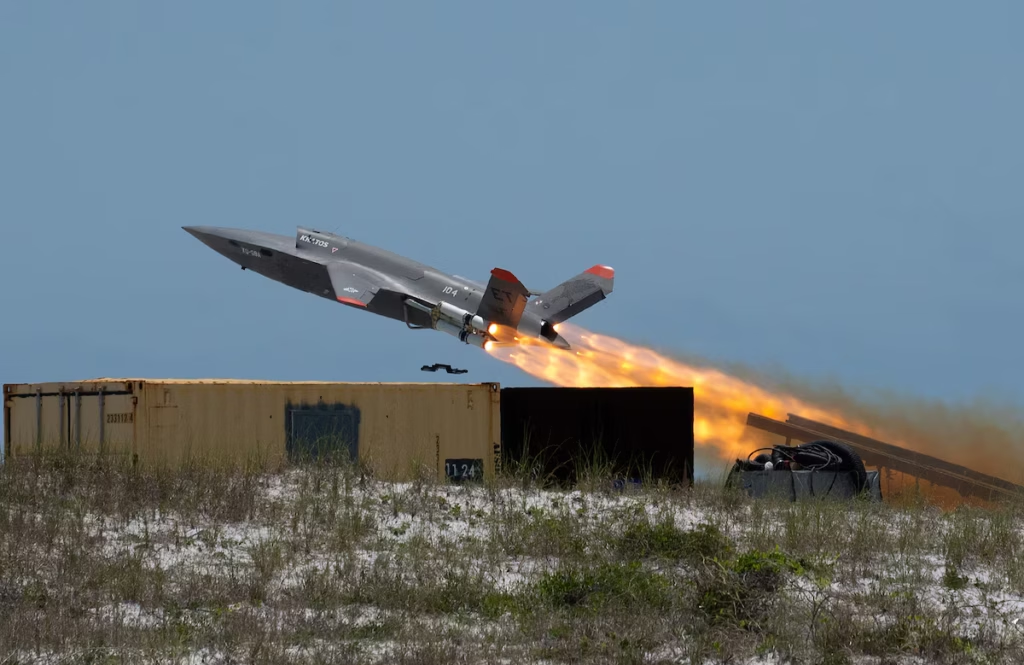
📸: Ilka Cole, Eglin Public Affairs
✈️ Autonomous aircraft tested: The XQ-58A Valkyrie flew with piloted fighters over Eglin’s Gulf Test and Training Range.
🤖 Human-machine teaming focus: The test was part of ongoing efforts to integrate autonomous systems into air combat roles.
🛡️ National defense strategy: Officials say the tech could improve effectiveness and protect pilots in high-risk environments.
EGLIN AIR FORCE BASE — The U.S. Air Force recently tested autonomous aircraft flying alongside piloted fighter jets over the Gulf Test and Training Range, advancing the military’s effort to integrate artificial intelligence into air combat.
The test featured the XQ-58A Valkyrie, an unmanned tactical aircraft developed to operate in tandem with crewed aircraft in high-risk missions. Members of the 40th Flight Test Squadron, part of the 96th Test Wing, led the demonstration from Eglin Air Force Base.
“This test with ACPs directly addresses the evolving requirements of modern warfare and the needs articulated by our warfighters,” said Gen. Ken Wilsbach, commander of Air Combat Command.
Autonomous Collaborative Platforms, or ACPs, are designed to operate semi-autonomously and support piloted aircraft in contested airspace. The goal is to improve combat effectiveness while reducing risks to human pilots.
The recent flight was conducted under the Department of Defense’s Rapid Defense Experimentation Reserve (RDER) program, with support from the U.S. Navy. The collected data will inform future development and deployment of semi-autonomous technologies across the military.
Brig. Gen. Jason E. Bartolomei, commander of the Air Force Research Laboratory, said the test shows how quickly human-machine teaming can be developed to meet operational needs. “By developing and integrating autonomous platforms with manned systems, we can quickly adapt, increase combat effectiveness and reduce risk to our aircrews in contested environments,” Bartolomei said.
This marks one of several steps the Air Force is taking to incorporate unmanned systems into future combat strategies, as the service prepares for more complex, multi-domain operations.
Register or login with Mid Bay News and never get another pop up on our site!